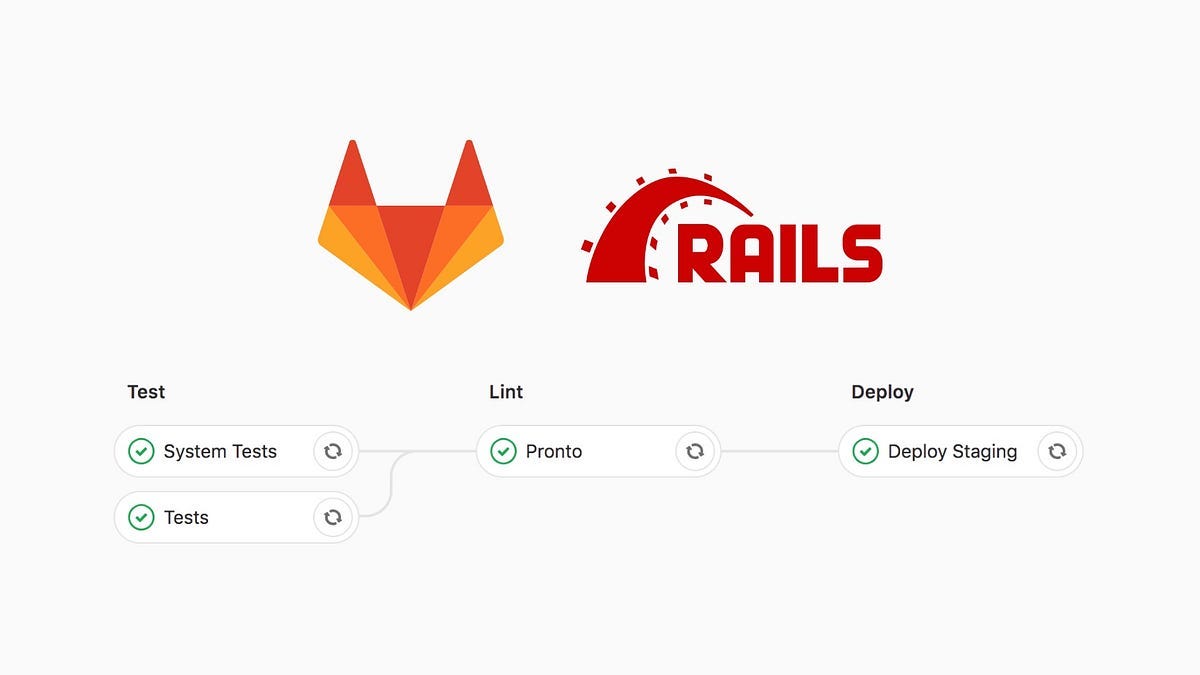🚀 CI/CD Pipelines for Ruby on Rails: From GitHub Actions to AWS 🌐✨
🚀 CI/CD Pipelines for Ruby on Rails: From GitHub Actions to AWS 🌐✨
Continuous Integration and Continuous Deployment (CI/CD) are no longer optional in modern software development — they’re the secret sauce behind rapid, reliable releases and developer sanity! 🧘♂️💻
In this blog, let’s dive deep into setting up a robust CI/CD pipeline for your Ruby on Rails application — starting with GitHub Actions and deploying seamlessly to AWS. We’ll break down each step with clear examples, so you can supercharge your Rails project with confidence! 🔥🚀

📌 What is CI/CD and Why Does It Matter?
CI (Continuous Integration) ensures that every code commit is automatically tested and integrated into the main branch.
CD (Continuous Deployment/Delivery) makes sure that the tested code is automatically deployed to production or staging servers.
✨ Benefits:
- ✅ Faster development cycles
- ✅ Early bug detection
- ✅ Easy rollbacks
- ✅ Happier dev teams and users!
🏗️ Step 1: Set Up GitHub Actions for CI
GitHub Actions is a free, powerful automation tool built into GitHub. It lets you run workflows triggered by events like pushes, pull requests, or tags.
🗂️ Example Rails Workflow
Create a .github/workflows/ci.yml in your Rails repo:
name: Ruby on Rails CI
on:
push:
branches: [ main ]
pull_request:
branches: [ main ]
jobs:
build:
runs-on: ubuntu-latest
services:
postgres:
image: postgres:14
ports: [ "5432:5432" ]
env:
POSTGRES_USER: postgres
POSTGRES_PASSWORD: password
options: >-
--health-cmd pg_isready
--health-interval 10s
--health-timeout 5s
--health-retries 5
env:
RAILS_ENV: test
PGHOST: localhost
PGUSER: postgres
PGPASSWORD: password
steps:
- uses: actions/checkout@v3
- uses: ruby/setup-ruby@v1
with:
ruby-version: 3.2
- name: Install dependencies
run: |
gem install bundler
bundle install --jobs 4 --retry 3
- name: Set up database
run: |
bundle exec rails db:create
bundle exec rails db:schema:load
- name: Run tests
run: |
bundle exec rails test🔍 Features:
✅ Runs on every push & PR
✅ Uses PostgreSQL as DB service
✅ Installs Ruby, dependencies, sets up DB, runs tests
✅ Easy to customize!
🚀 Step 2: Add Continuous Deployment to AWS
Once tests pass, let’s deploy! One popular route is deploying your Rails app to AWS EC2 or Elastic Beanstalk.
☁️ Example: Deploy to EC2 with SSH
Add another job in your ci.yml:
deploy:
needs: build
runs-on: ubuntu-latest
if: github.ref == 'refs/heads/main'
steps:
- uses: actions/checkout@v3
- name: Deploy to EC2
uses: appleboy/ssh-action@master
with:
host: ${{ secrets.EC2_HOST }}
username: ${{ secrets.EC2_USER }}
key: ${{ secrets.EC2_SSH_KEY }}
script: |
cd /var/www/yourapp
git pull origin main
bundle install
rails db:migrate
rails assets:precompile
touch tmp/restart.txt✅ Features:
- Uses appleboy/ssh-action
- SSH into EC2 server securely
- Pulls latest code, installs gems, migrates DB, restarts app
🔑 Secure Secrets:
Store EC2_HOST, EC2_USER, EC2_SSH_KEY as GitHub Secrets under Settings ➜ Secrets and variables.
📈 Alternative: Deploy with Elastic Beanstalk
AWS Elastic Beanstalk simplifies deploying web apps. Here’s a quick gist:
1️⃣ Install EB CLI:
pip install awsebcli --upgrade2️⃣ Initialize:
eb init3️⃣ Create environment:
eb create your-env-name4️⃣ Deploy:
- name: Deploy to Elastic Beanstalk
run: |
eb deploy your-env-name
env:
AWS_ACCESS_KEY_ID: ${{ secrets.AWS_ACCESS_KEY_ID }}
AWS_SECRET_ACCESS_KEY: ${{ secrets.AWS_SECRET_ACCESS_KEY }}
AWS_REGION: your-region⚡️ Tips for Smooth CI/CD
✅ Keep secrets safe — never hardcode keys!
✅ Use staging environments before pushing to production.
✅ Monitor deployments and roll back quickly if needed.
✅ Automate database backups.
✅ Document your pipeline for your team!
🎉 Conclusion
With GitHub Actions + AWS, you can build a modern, resilient CI/CD pipeline for your Ruby on Rails app in no time. Say goodbye to manual deploy headaches and hello to happy releases! 🚀✨
🔗 Resources
💬 Have Questions?
Drop a comment below or reach out — I’d love to help you get your Rails CI/CD pipeline humming smoothly! 🎉🚀
Comments
Post a Comment